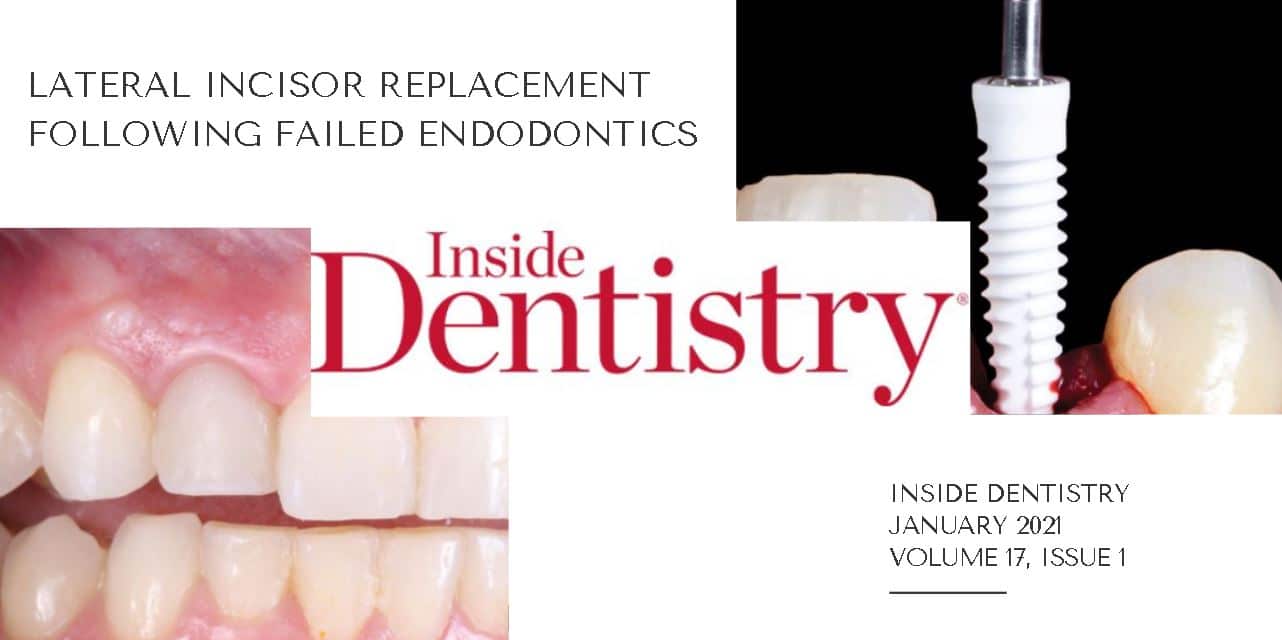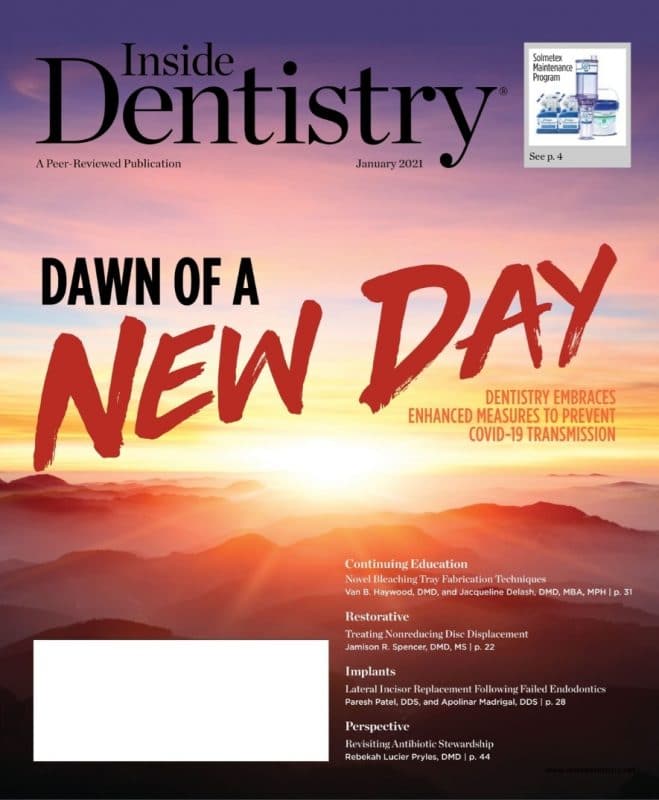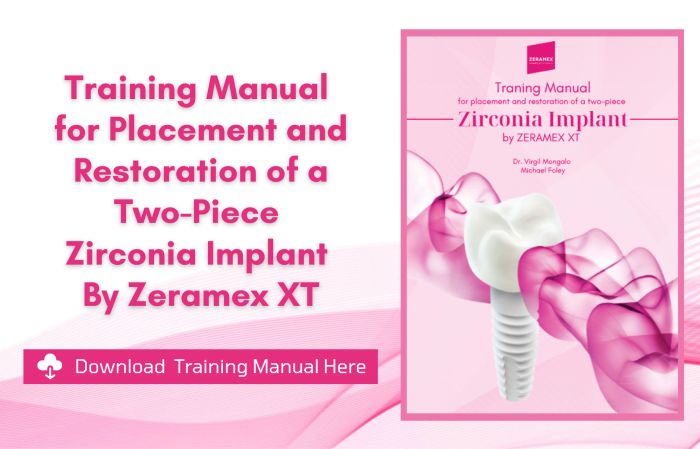Lateral Incisor Replacement Following Failed Endodontics | Two-piece ceramic implant system provides esthetic, screw-retained solution by Paresh Patel, DDS | Apolinar Madrigal, DDS
With ceramic dental implants offering a metal-free, esthetically white option, clinicians may want to investigate incorporating them into their implant practices. Although ceramic implants have historically had a one-piece design, improvements in the technology used to fabricate them have resulted in the development of two-piece ceramic implant/abutment systems. With this advancement, ceramic implants can now be restored following a traditional implant workflow and even facilitate screw retention of the ceramic abutment to the fixture using a carbon fiber screw.
A 36-year-old female patient presented with a maxillary right lateral incisor that had previously received root canal therapy, but the treatment was failing. Endodontic re-treatment was planned; however, during the re-treatment appointment, a vertical fracture was identified as the cause of failure. The patient was then offered the option of having her tooth restored with an implant, and she accepted with some concerns.
Having worked in the dental field many years prior, the patient was very self-conscious about her teeth and feared that others would notice that the new restoration was not her natural tooth. She wanted something that would offer the best long-term potential for maximum esthetics as well as no hint of gray shine from the implant through the tissue. After a thorough analysis based on clinical photography and videography as well as cone-beam computed tomography, the principal aspects of the case that would pose a challenge were identified. The patient had a high lip line, even with a relaxed smile. This, combined with a thin gingival biotype, made the transition between the restoration and the soft tissue perhaps the most critical aspect of the treatment.
With these factors in mind, the decision was made to restore the patient using a two-piece zircona implant system. This system would permit the use of a reduced diameter implant (3.5 mm) as part of the screw-retained solution. Although a metal-free option was not one of the top priorities of the patient, she did see the value in that, long-term, there would be no chance of issues related to corrosion.
Contact
Want to know more about Zeramex?
Email us at [email protected] with your contact details and we will get in touch with you!
ZERAMEX BROCHURE
Click here to download the Zeramex sales brochure


